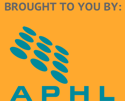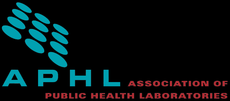Lesson Plans & Experiments
The Flu
|
Outbreak Investigation
“When Contagion Spreads: Crowdsourcing Disease Outbreaks”
Make Your Own Hand Sanitizer
Banana DNA
Have your DNA & Eat It, Too (PDF)
Extract Your Own DNA
http://learn.genetics.utah.edu/content/labs/extraction/howto/ |
It's Genetics, Baby!
|
Should Newborn Screening Be Standardized?
http://sciencenetlinks.com/science-news/science-updates/newborn-screening Banana DNA
Have your DNA & Eat It, Too (PDF)
Extract Your Own DNA
http://learn.genetics.utah.edu/content/labs/extraction/howto/ |
Expect The Unexpected
|
Ebola Outbreak - PBS
BrainPOP Educators, “Ebola Lesson Plan: Spreading the Facts”
Learning From Disaster: Exploring the Ebola Epidemic
Do You Dread the Spread?
When Contagion Spreads: Crowdsourcing Disease Outbreak
Make You Own Hand Sanitizer
Entomologists on Safari: On the Hunt for Mosquitoes
Hantavirus
|
The World Around Me
|
Get the Lead Out
Learning and Teaching About the Environment - EPA
http://www2.epa.gov/students/lesson-plans-teacher-guides-and-online-resources-educators The Lead Placemat: Understanding Lead Exposure - CDC
Water Filtration - EPA
Activity 1: History of Radiation Protection (PDF) - EPA
|
Superbugs: antibiotic Resistance
|
Superbugs and Antibiotics: Explore With a Dice Game
NY Times Lesson Plans Highlighting Antibiotic Resistance http://learning.blogs.nytimes.com/2007/11/27/outbreak-2/?_r=0 "What Causes Antibiotic Resistance" by Kevin Wu - TEDEd
Make Your Own Hand Sanitizer
Glow Germ
Growing Bacteria/Agar Lab
|
Measles, Mumps, Pertussis, Oh My!
|
PBS Vaccine War Lesson Plan
Fighting Disease: Researching the History and Biology of Vaccines - NY Times
Lessons for Vaccination: Learning Corner
Common Vaccinations: Discovery Education
|
There's What In My Food?
|
The Teachers Guide: Your Game Plan for Food Safety
Make Your Own Hand Sanitizer
Growing Bacteria/Agar Lab
FBI Case: Perils at the Picnic
Home Food Safety Survey
|
Have questions or feedback? Contact us at [email protected].



